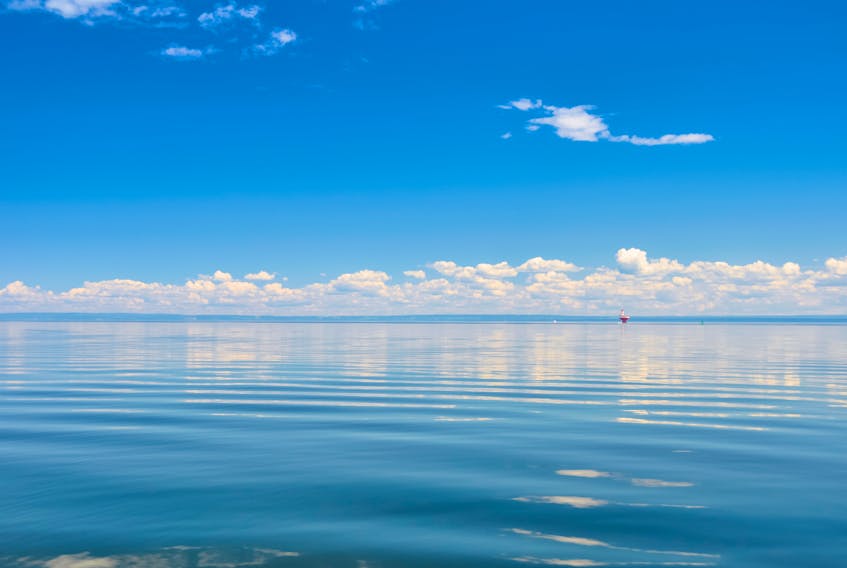Here’s to getting used to the unusual.

Since it’s October, a summer that was warmer than usual for many parts of the Atlantic provinces is now in the rearview mirror.
Also probably sliding into memory, for everyone except maybe fisheries scientists, are this year’s remarkably warmer-than-usual ocean temperatures, not only off Nova Scotia and Prince Edward Island, but off parts of Newfoundland as well.
Rising ocean temperatures along the Atlantic coast of North America are, of course, old news: as I’ve written before, the rise in coastal temperatures is not only measured in degrees, but in the movement of fish stocks: fish that used to be off North Carolina have made their way to New Jersey. In other places, there are fears that species that can’t move quickly enough — like lobster — may die off in the southern parts of their traditional range.
But there’s a new bit of ocean news that should be every bit as alarming for people in the Atlantic region.
For years, scientists have been predicting — relatively successfully — the annual size of a hypoxic patch of water in the Gulf of Mexico. The Gulf of Mexico dead zone is an area of ocean bottom where the amount of dissolved oxygen in the water is so low that it can’t support marine life. This year, it’s about 14,760 square kilometres in size — scientists calculate how big it will be every year by looking at things like rainfall, because, in that gulf, the dead zone is caused primarily by agricultural fertilizers swept down the Mississippi River from its broad watershed. The dead zone kills fish, damages their ability to reproduce, and also drives them away.
But now there are concerns that a different North American gulf is also losing oxygen.
And it’s closer to home.
The Gulf of St. Lawrence is warming — and losing oxygen faster — than almost any region in the world’s oceans, closing in on becoming hypoxic in some areas as well. That’s the findings of a new study by scientists based at the University of Washington.
But in this case, the problem isn’t agricultural runoff. In its own way, it’s a much bigger problem; the way two sets of major ocean currents are behaving is changing, and that change is driving warmer, saltier water into the gulf. (That warmer water is capable of carrying less oxygen.)
The Gulf of St. Lawrence is warming — and losing oxygen faster — than almost any region in the world’s oceans, closing in on becoming hypoxic in some areas as well. That’s the findings of a new study by scientists based at the University of Washington.
The study found that, as a result of climate change and the change in ocean temperatures, warm Gulf Stream waters are moving further north, and the cold waters of the Labrador Current are slowing — the Gulf Stream waters are moving into deep-water areas of the Gulf of St. Lawrence that used to be replenished with more oxygen-rich Labrador Current water. (There’s also believed to be some extra hypoxic effect from the growth of new, warm-water biological critters in the warmer water.)
The risks of lower oxygen levels include threats to species like cod, Greenland halibut and snow crab.
The other interesting thing is, of course, that a lot of the Atlantic region’s weather is also strongly affected by the both Gulf Stream and Labrador Current.
More troubling than anything else? When it comes to the dead zone in the Gulf of Mexico, there are ways to control farming operations to try and limit agricultural runoff — at least by helping farmers limit field fertilization to periods when there’s likely to be less runoff.
There’s no way to change the way that ocean currents operate — and researchers say there’s no real way to know exactly what happens next.
I guess we’ll find out the hard way
Russell Wangersky’s column appears in 36 SaltWire newspapers and websites in Atlantic Canada. He can be reached at [email protected] — Twitter: @wangersky.









